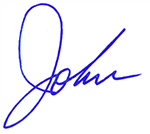![]()
President's Update, April 2017
 |
| John C. Morris, M.D. ATA President |
The ATA half-day symposium just prior to the Endocrine Society in Orlando was a great success. Chaired by Jacquie Jonklaas and Antonio Bianco (co-chairs of the ATA Hypothyroidism Guidelines) the symposium entitled "Hypothyroidism – Where Are We Now?" attracted a strong and diverse group of attendees who enjoyed a series of presentations highlighting scientific advances and evolving concepts regarding the diagnosis and management of this most common endocrine dysfunction disorder. Perhaps the highlight of the afternoon was a patient panel discussion, co-moderated by Regina Castro and Alan Farwell, which included commentary and a question and answers session. I wish to thank Kimberly Dorris, Philip James, and Judy O'Reilly for their superb insights and perspective on the aspects of thyroid hormone replacement therapy, which continues to create controversy and, at times, friction between providers and their patients. For me, the most important message imparted by the symposium is that this topic remains a fertile one for both basic and clinical research as the only effective means of providing answers. Enduring media from the satellite will be posted to our website in the near future.
I hope you have seen already the April issue of THYROID. This issue includes a commentary from the ATA Thyroid Cancer Guidelines Taskforce, chaired by Bryan Haugen (who is also first author on the commentary) about the recently suggested classification change in encapsulated follicular variant papillary thyroid cancer (eFVPTC) to noninvasive follicular thyroid neoplasm with papillary-like nuclear features (NIFTP). The writing group for this commentary also included four pathologists and one endocrinologist who were not original members of the taskforce and recused 3 task force members who were authors on the NIFTP paper. This reclassification and its potential impact upon patients and providers who care for thyroid patients has been one of the highest profile items in our specialty for the last several months, since the publication of the proposal in JAMA ONCOLOGY a year ago. For this reason the ATA Board of Directors asked the task force to review the topic as an update to our guidelines. As you will read in the report, the task force, and now our guidelines, support the reclassification as a means of reducing overtreatment of patients with this extremely low-risk lesion. In keeping with other recommendations within the guidelines, this recommendation was scored as a weak recommendation based on moderate-quality evidence. The recommendation also calls for prospective research studies to validate the reported outcomes. The group noted that even prior to the nomenclature change that eFVPTC was considered to be a low risk lesion and that the guidelines called for management as such. Further it remains unclear how patients with NIFTP should be followed after diagnosis. This update to our guidelines serves to keep them up-to-date and relevant in the face of changing clinical science and on behalf of the ATA Board of Directors, I wish to thank Bryan and the writing group for this important effort.
Registration and Abstract submission is now open for the 87th Annual Meeting of the ATA. The meeting will be in Victoria, BC, Canada, one of the most beautiful places in the world, October 18-22. Co-chairs Angela Leung and Mingzhao Xing and the members of the program committee have largely completed the program and are preparing for the arrival and review of hundreds of abstracts, representing the best of Thyroid research and practice. I encourage you to register early in order to take advantage of the early-bird discount and to reserve your accommodations in the Fairmont Empress hotel. You can see the program outline, submit an abstract and register for the meeting and housing at the ATA website located here. It will be great, hope to see each of you there!

John C. Morris, III, M.D.
President, American Thyroid Association
